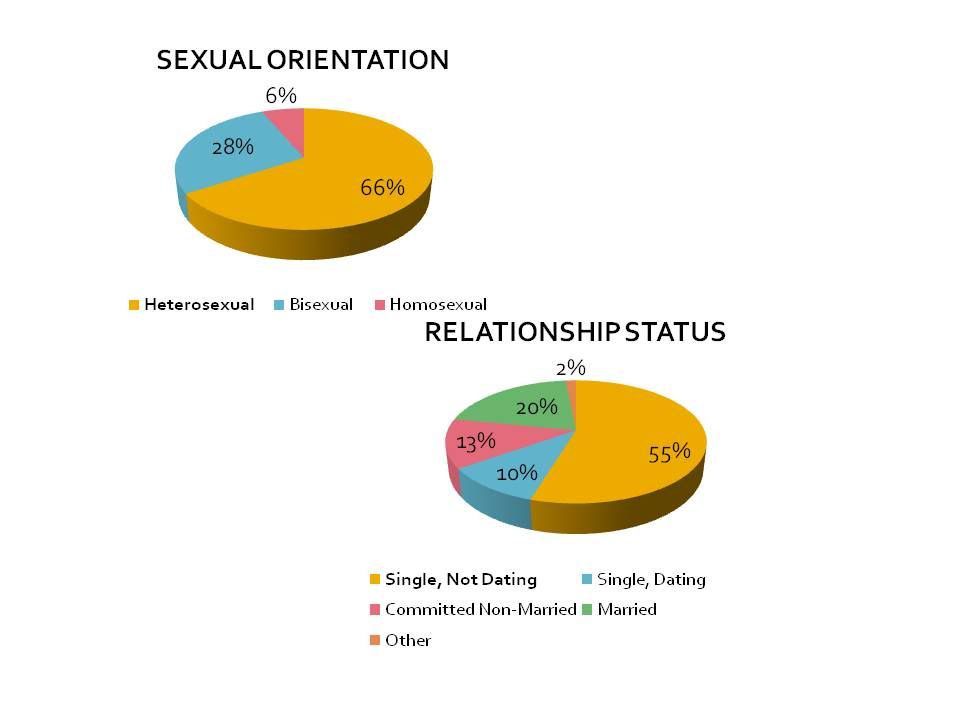Phase I: Fan Demographics
A number of questions were asked to assess the demographics of the fan sample (not all are reported here).
The average fan was approximately 31 years old and a citizen of the United States.

My sample was overwhelmingly female self-identified."Other" encompasses fans who identified as male-to-female transsexual (the most common), female-to-male transsexual, transgender, genderqueer, or intersexed.

One question in the survey asked participants what their perception of fan gender demographics was, and the results are consistent with reality. The vast majority of participants perceived their own fan community as being primarily populated by females. I mention this because I think it may have important implications for why some female fans may feel comfortable with sexual disclosure online and why they may benefit from it in some circumstances.
The majority of the current sample self-identified as heterosexual, though there was significant representation of LBG among the fans who filled out the survey as well. In addition, fan participants were in a variety of relationships, with "single, not dating" being the most prevalent.

Again, I asked fans what their perception of fellow fans' sexual orientation. Interestingly, a significant minority of fans reported that there were about equal numbers of straight, gay, and bisexual fans in their fan community. The perception among many is that their fan community is very diverse, a perception that seems to have some basis in reality, but may be slightly over-estimated. However, as we'll see later, this diversity has been linked to many benefits in fans' perceptions.
Other demographic variables of interest include education level and employment.

Citation: Meggers, H.J. (2010, April). Fans in Online Fannish Spaces: Expressions of Self and Sexuality. Paper presented at the meeting of The National Popular Culture & American Culture Associations Annual Conference, St. Louis, MO.
The average fan was approximately 31 years old and a citizen of the United States.

My sample was overwhelmingly female self-identified."Other" encompasses fans who identified as male-to-female transsexual (the most common), female-to-male transsexual, transgender, genderqueer, or intersexed.

One question in the survey asked participants what their perception of fan gender demographics was, and the results are consistent with reality. The vast majority of participants perceived their own fan community as being primarily populated by females. I mention this because I think it may have important implications for why some female fans may feel comfortable with sexual disclosure online and why they may benefit from it in some circumstances.
The majority of the current sample self-identified as heterosexual, though there was significant representation of LBG among the fans who filled out the survey as well. In addition, fan participants were in a variety of relationships, with "single, not dating" being the most prevalent.

Again, I asked fans what their perception of fellow fans' sexual orientation. Interestingly, a significant minority of fans reported that there were about equal numbers of straight, gay, and bisexual fans in their fan community. The perception among many is that their fan community is very diverse, a perception that seems to have some basis in reality, but may be slightly over-estimated. However, as we'll see later, this diversity has been linked to many benefits in fans' perceptions.
Other demographic variables of interest include education level and employment.

Citation: Meggers, H.J. (2010, April). Fans in Online Fannish Spaces: Expressions of Self and Sexuality. Paper presented at the meeting of The National Popular Culture & American Culture Associations Annual Conference, St. Louis, MO.